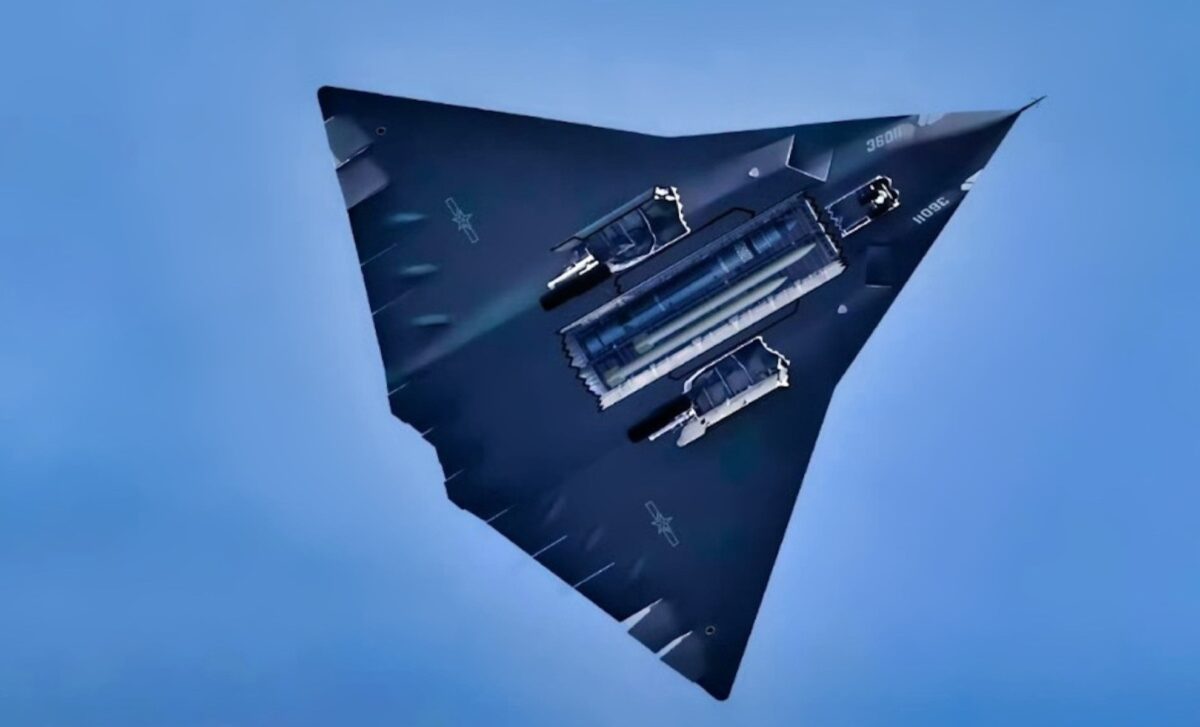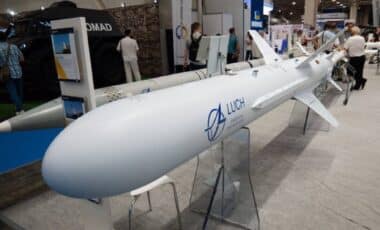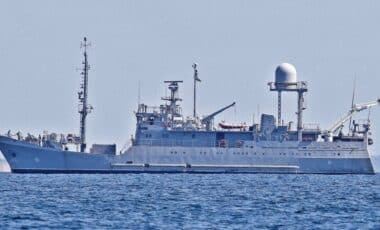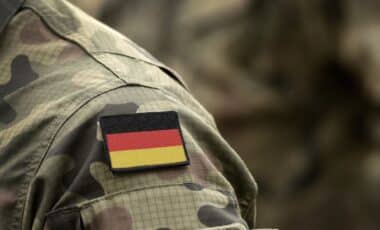New images of China’s J-36 stealth tactical jet have surfaced, showing the aircraft from a head-on perspective for the first time. The photos highlight the jet’s unusually large size and reveal details of its cockpit and engine inlets.
The J-36 is a sixth-generation Chinese fighter developed by Chengdu Aircraft Corporation, noted for its heavy frame and stealth features. This fresh frontal view confirms earlier assessments about its design, including a wide bubble canopy accommodating two crew members seated side-by-side. The aircraft’s large dimensions and stealth shaping mark it as a distinct entrant in China’s next-generation fighter fleet.
The images emerged shortly after clearer photos of a different Chinese sixth-generation fighter, the Shenyang J-XDS or J-50, were released. These revelations fit a pattern of gradual public exposure of China’s advanced military aircraft, offering rare glimpses into their design and capabilities.
Is This the Beginning of Space War? Trump’s ‘Golden Dome’ Raises Alarms Worldwid
Distinctive Design Features Revealed in Frontal Images
According to the newly published photos, the J-36’s frontal profile is dominated by a broad bubble canopy and an equally wide nose section, confirming a side-by-side crew arrangement similar to American F-111 and Russian Su-34 bombers. The cockpit’s size and shape create a notably wide frontal silhouette, underlining the aircraft’s substantial scale.
The images also expose the J-36’s dorsal inlet with a diverterless supersonic inlet (DSI) bump that appears large and prominent. Additional details include lower trapezoidal air inlets akin to those on the F-22 and a large gold-hued electro-optical window embedded in the side of the nose. These features contribute to the jet’s stealth profile and sensor capabilities, as detailed in TWZ.
Confirmation of the Aircraft’s Size and Configuration
The photos underscore how the J-36’s physical bulk is less apparent from the side, but unmistakable from the front. Its tailless, stealthy delta-wing planform, previously observed in side images, looks more massive when viewed head-on. The combination of the large canopy, broad nose, and triple-engine layout highlights Chengdu’s intent to produce a heavy tactical jet capable of accommodating advanced systems and crew.
According to the media source, the triple-engine configuration is clearly visible along with the supersonic inlet design, reinforcing assessments about the aircraft’s thrust and aerodynamic efficiency. The J-36’s size and design choices position it differently from smaller single-pilot stealth fighters in development.
Context Within China’s Evolving Fighter Development
The J-36 images arrived shortly after clearer shots of Shenyang’s J-XDS/J-50 fighter surfaced. The latter aircraft, while still heavy, is smaller and features a single pilot, a more streamlined canopy blending into the fuselage, and distinctive swiveling wingtip control surfaces. It also shows an F-22-like nozzle arrangement and a weapons bay with side doors, indicating a different design philosophy.
As reported by the same source, the appearance of detailed images of both jets aligns with an ongoing pattern of Chinese military aviation disclosures following initial test flights in late 2024. This trend allows analysts to better understand the technological direction and diversity of China’s future air combat capabilities.








